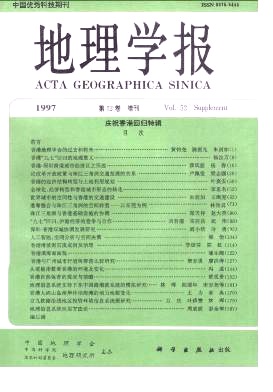Yan Xiaopei, Leng Yong
This paper focuses on the coordinative development of Shenzhen-Hong Kong twin cities. The attention is initially paid to the conditions of the emergence of the twin cities. The analysis results have showed that the historical and geographical factors, reform and open-door policies, and the influences of economic globalization are main conditions. Then the socio-economic links between the twin cities are analysed. There exist close social and economic links between them, mainly including the flows of capital, goods, persons and information. The capital flow is mainly comprised by the investment from Hong Kong. From 1979 to 1995 ,the investment from Hong Kong accounted for 79. 2% in Shenzhen’ s total received foreign investment. The good flow in-cludes that through and between the twin cities. Hong Kong has been the largest import and export market of Shenzhen. Since the reform,Shenzhen’ s import from Hong Kong have beenmainly containing raw and processed materials, and fittings, which are needed by the joint-ven-tures in Shenzhen. And the products of these joint-ventures comprise a large share of Shenzhen’ s export. With the development of the social and economic links,the flows of person and information become more and more strong. The infrastructures like transportation and communication between the Shenzhen and Hong Kong are further linking up and become the necessary channels of the flows between the twin cities.Thirdly. the urban spatial expansion of Shenzhen and Hong Kong is examined. Because of the close links of the twin cities, the main economic activities and urban land use of Shenzhen have showed a border-oriented tendency, namely developing along the belt bordering Hong Kong. On the contrary,Hong Kong’ s urban spatial expansion mainly occurs in the south of the city, and the development of the north part has been ignored for a long time,which has resulted in the formation of non-blended economic space of the twin cities.Fourthly, the challenges and problems of the twin city development are identified. It seems that the twin cities face the challenges of external conditions,such as the prevalence of interna-tional trade protectionism, the gradual disappear of policy advantages which Shenzhen obtained at the begining of the reform,and the competitions from other countries. In addition,there have appeared some problems; 1 )the government of twin cities are lack of contacts; 2)the economic cooperations still stay at the low level; and 3)the link-up of infrastructures is not satisfactory.Finally, the suggestions and perspectives about the twin city development are put forward : DTo strengthen the cooperation, especially between the city governments. 2) To change the pattern of economic cooperation. 3)To make the economic space of the twin cities blend. It is believed that with the regain of Hong Kong revereignty in 1997,Shenzhen-Hong Kong twin cities will be further invoved the economic globalization and play an increasing important role in the world urban system.
